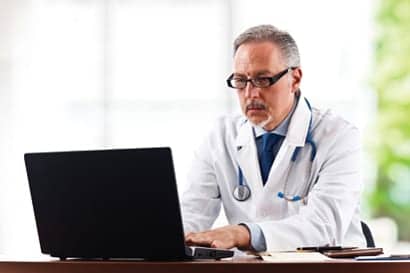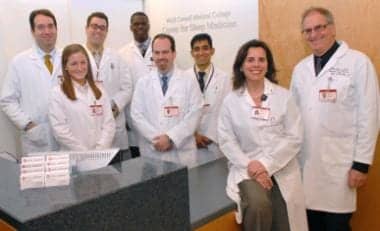By Daniel B. Brown, JD
Many commercial insurance payors have adopted home sleep testing (HST) as a path to curtail spending on sleep medicine services. Disease benefits managers have taken on the task of preauthorizing insurance coverage for sleep testing with a preference for the less-expensive home test. With a view to capture some of the increased share of HST business, national vendors of home test services are marketing programs to doctors and sleep labs to outsource the shipping, education, scoring, and delivery of interpreted home apnea tests (the so-called “patient direct” model).
The expansion in the number of home tests and the expected rise in the patient direct model challenge the need for high-cost brick and mortar sleep laboratories staffed with highly trained and certified sleep technicians—at least for bread-and-butter OSA testing. Auto-scoring test devices and self-titrating PAP devices are becoming so advanced that some argue that primary care physicians (PCPs) could be as effective as sleep specialists in managing a patient’s treatment following a positive test for OSA.1 Industry reaction and accommodations to the coming wave of HST are being played out before us now in the marketplace.
The Role of Specialty Benefits Managers
With insurance payments for sleep disorders testing and treatment constantly rising in the past decade, commercial insurance companies are looking for ways to reduce their costs for OSA coverage. Benefits management companies offer commercial payors the opportunity to control costs in treating chronic diseases such as diabetes or obstructive sleep apnea. Benefits managers operate by managing the patient’s access to and use of the health care services specific to their disease.
Depending on the arrangement, benefits managers will impose preauthorization requirements on test orders and allow coverage only for the most efficient test. In the absence of certain patient comorbidities, the benefits manager will likely limit coverage for OSA testing to the HST in lieu of the more expensive in-lab PSG. To control quality and cost, the benefits manager will typically contract with a handful of national or regional providers of the test or suppliers of any needed therapy equipment and supplies. At least three benefits management companies have recently rolled out sleep disease management programs: MedSolutions, CareCore, and WellPoint’s AIM Specialty Health.
The push toward home apnea testing through contracted benefits managers is expected to have a significant economic effect on established sleep labs. “Benefits managers are powerful because they favor HSTs and because their payment decisions can be felt nationwide,” says Terry Crabtree, managing partner of Health Managing Partners, Dallas. Crabtree says that sleep industry experts expect that 45% of all apnea sleep tests will be home sleep tests in the near future.
The risk to established labs extends beyond lower reimbursement for the HST. A more troubling consequence could be the local lab’s loss of the HST business entirely. Benefits managers and payors can direct patients to nationwide HST providers under contract with the benefits managers. These national or regional players typically use patient direct delivery models in which the contracted provider mails the HST device directly to the patient along with instructions for its use and return.
Legal Aspects of Patient Direct Sleep Testing
Apart from contracting with benefits management companies, some national providers of the patient direct model seek to contract directly with physicians or sleep labs as the provider’s HST solution. Like all health care services, the array of legal and reimbursement issues should be reviewed before jumping in. Consider, for example, a hypothetical primary care physician who wants to add sleep testing to his or her menu of services. Say that the PCP decides to contract with a national or regional home test provider to perform the technical aspects of the test (the “logistics vendor” or “vendor”).
Under this hypothetical program, the PCP would examine the patient for suspected OSA, and, if indicated, order the logistics vender to ship the device and to instruct the patient on its use. The patient would return the device to the vendor, who would score the test and send the data to a sleep specialist licensed in the PCP’s state to interpret the test. The vendor would deliver the test results to the PCP for use in the patient’s ongoing care. Assume that the provider bills the payor globally and pays a fee to the supplier for the testing service.
Medicare Rules
Depending on where our PCP practices, Medicare imposes complex reimbursement rules that make the patient direct model difficult to operate in the Medicare setting. For example, last year CMS formed a new Part B MAC Jurisdiction “H.” Jurisdiction H covers the states of Arkansas, Louisiana, Mississippi, Colorado, New Mexico, Oklahoma, and Texas.
In March 2013, Novitas Solutions Inc, the new Part B Medicare Administrative Contractor (MAC) for Jurisdiction H, issued a revised Local Coverage Determination (LCD) for Outpatient Sleep Studies. The LCD establishes the following rules applicable to billing Medicare for HSTs:
Face to Face Instruction. The LCD requires all HST providers in Jurisdiction H to perform a face to face education and device application with the patient before the study is performed. The education and application should be performed by a technician holding the credentials described below. While the PCP could perform this pretest education with his or her own staff, it is unclear how the off-site logistics vendor could meet this pretest requirement.
Technician Qualification. The technician who performs the patient education and device application must hold certain professional certifications. The LCD requires that such technicians hold any one of the RPSGT, CPSGT, CRT-SDS, or RRT-SDS credentials, including the Registered Sleep Technologist certification issued by the American Board of Sleep Medicine.
Physician Qualification. Under the LCD, physician practices that bill HSTs to Medicare must have on staff either (i) a Boarded sleep medicine physician/PhD, or (ii) a physician specializing in any of pulmonary medicine, neurology, psychiatry, or otolaryngology with specialized training in sleep medicine. Also, the physician or physicians who supervise or interpret the HST must be Boarded sleep physicians.
Accreditation. Finally, even if the PCP in our example met each of the touch, technician, and specialty requirements above, the LCD still requires that the physician’s sleep testing program be accredited before billing Medicare for the sleep test. According to the LCD, the PCP’s practice must be accredited by any of The Joint Commission, AASM, or the Accreditation Commission for Health Care before billing Medicare for the HST.
Medicare Anti-Markup. In addition to the requirements under the LCD, Medicare has a uniform Anti-Markup Rule applicable in all areas of the country. If the PCP bills Medicare for the HST on a global basis, and if the interpreting physician does not perform most of his or her physician services at the PCP’s practice (or does not read the test on the PCP’s practice premises), then the billing PCP must follow Medicare’s Anti-Markup rule. Basically, this rule requires the billing physician to identify the interpreting physician and then limit the amount the PCP bills Medicare for the professional component of the test to no more than the amount paid to the reading physician.
Not all Part B MACs are as restrictive as Novitas Solutions regarding conditions to performing sleep tests billed to Medicare.2 But restrictions such as the ones discussed here do limit the attractiveness of home sleep testing for PCPs who are considering entering into home sleep testing for their Medicare patients.
Commercial Reimbursement
Given the general push to expand home testing for sleep apnea, it is not surprising that commercial reimbursement for HST is much less restrictive. For example, there are no physician, technician, or lab accreditation or credentialing requirements in any of the current HST medical coverage policies published by United Health, Cigna, or AIM Specialty Health.
Some regulatory issues remain, however. First is state licensure. At least three states—Florida, Alabama, and New Jersey—require stand-alone, non-physician practice sleep labs to obtain state licenses to perform sleep testing. Florida’s licensure statute covers not only facilities, but also portable equipment providers. Telephone conversations with representatives of Florida’s Agency for Health Care Administration informed the author that persons or entities that perform home sleep testing fit the definition of a portable equipment provider under the Act. Thus, persons who perform HST in Florida should be licensed as a Health Care Clinic unless an exception applies. See Fla. Stat. Ann. Section 400.991(b). Home sleep tests performed by physician practices that are owned 100% by physicians are exempt from Florida licensure.
New Jersey requires stand-alone sleep labs to obtain licensure as an Ambulatory Care Facility. Unlike Florida, New Jersey’s facility licensure law does not include portable suppliers. According to New Jersey regulators, HST is not an activity that requires an Ambulatory Care Facility license in New Jersey at this time.
Alabama takes a different position. Alabama’s sleep lab licensure law requires persons who perform sleep tests to obtain a Sleep Disorders Facility license from the Alabama State Board of Health. See Ala. Rules, Chap. 420-5-18, “Sleep Disorders Facilities.” In telephone conversations with Alabama Health Department representatives, the author was told that the regulations require that all persons who provide sleep test services in Alabama, even HST, must first be licensed as a sleep lab. Because licensure of a sleep lab requires the existence of a facility, it would appear that the providers of portable sleep testing in Alabama must first have a sleep test facility that is licensed under Alabama law in order to perform HST. The Department representative said that the State might change the licensure requirement for HST in the future. Licensure requirement does not apply to physicians who perform sleep tests on their own patients as part of the doctor’s own physician services.
Another regulatory concern is state licensure of the sleep technician performing the home test. Several states have adopted PSG technician licensure laws. An examination of these laws will be necessary to determine if the scope of law extends to a technician’s education, delivery, scoring of the HST, or answering patients’ test questions as part of a 24-hour patient hot line. If so, entities performing the HST should ensure that the technicians performing licensed functions hold appropriate licenses. Licensure laws will apply regardless of who pays for the HST.
Next, PCPs or others seeking to perform non-Medicare HSTs should not assume that all commercial payors will cover the HST in the first place. According to its coverage policy for sleep testing, Blue Cross-Blue Shield of Mississippi considers home testing for OSA to be investigational and not covered for reimbursement.
Lessons for Sleep Lab Owners
The patient direct and other models for HST delivery are a fact of life. The threat to brick and mortar sleep labs that do nothing to change their business horizon to adapt to this new world is real.
To limit the damage to existing labs, Crabtree suggests that labs adopt HST as part of their business lines. “HST will be part of business as usual if, for no other reason, than to retain referrals,” Crabtree says. “Maintaining referrals and referral streams will retain their importance, as complex sleep patients will still be covered for the in-lab PSG,” Crabtree notes.
Crabtree also suggests beefing up in size to blunt the size of marginal losses. “Seek to grow by merger or acquisition or, if appropriate in your business life cycle, seek to sell or merge your business as part of another company’s strategic goal,” he says. SR
Daniel B. Brown, JD, is the managing shareholder of the Atlanta office of Brown, Dresevic, Gustafson, Iwrey, Kalmowitz and Pendleton, The Health Law Partners, LLC. The content of this article is intended to provide a general guide to the subject matter and does not serve as legal advice. Legal counsel should be sought about your specific circumstances. Questions for the author can be submitted to [email protected].
References
- Chai-Coetzer CL, Antic NA, Rowland LS, et al. Primary care vs specialist sleep center management of obstructive sleep apnea and daytime sleepiness and quality of life. JAMA. 2013;309(10):997-1004.
- Novitas’ sleep test LCD for Jurisdiction H.




